The Effect of Soothing Music on Neonatal Behavioral States
in the Hospital Newborn Nursery
by © 1996 ~ June Kaminski, MSN PhD(c)
Source:
Kaminski, J. & Hall, W. (February 1996). The Effect of Soothing Music on Neonatal Behavioral States in the Hospital Newborn Nursery" Neonatal Network: The Journal of Neonatal Nursing, 15, (1), p. 45 - 54.
This published article was based on my MSN Thesis completed at the University of British Columbia in Fall 1993. One of my advisors co-authored the article.
Background
 The birth of each human being begins with a complex process of adaptation to the outside world. To successfully adapt to the extrauterine environment the neonate must make many physiological and behavioral adjustments including; respiratory, cardiovascular, gastrointestinal, endocrinological and behavioral systems.1 The newborn exerts an enormous amount of energy establishing homeostasis of these systems, often in less than ideal circumstances.
The birth of each human being begins with a complex process of adaptation to the outside world. To successfully adapt to the extrauterine environment the neonate must make many physiological and behavioral adjustments including; respiratory, cardiovascular, gastrointestinal, endocrinological and behavioral systems.1 The newborn exerts an enormous amount of energy establishing homeostasis of these systems, often in less than ideal circumstances.
In the past few decades, hospitals have become the accepted environment for childbirth and postpartum adjustment.2 The majority of neonates born in Western civilization spend the first one to three days of their lives in the hospital environment. Recently, "rooming -in" or accommodating the mother and her newborn in one room has become popular.3 Despite this shift away from nursery - focused care, many newborns still spend a considerable portion of their hospital stay in the normal newborn nursery. Karraker explains that this occurs due to "...illness of either the mother or the infant, the mother's need for rest, avoiding infections when the mother receives visitors, and the mother's desire to be relieved of caretaking duties at times" (p. 362).
 The hospital newborn nursery is designed and operated according to specific stipulations or standards.4 These standards result in environmental conditions of bright, continuous light and a high level of noise. Hilton referenced Kosten and Van Os as stating that the recommended noise level in the hospital setting should be no more than 35 decibels during sleep periods and 40 decibels when the client is awake. Keefe described the nursery environment as having a noise level of over 80 decibels for an average of 146.8 minutes per four hour period of observation. Keefe warns that an 80 decibel noise level is comparable to loud traffic noise. She found that the most striking and persistent noise was the sound of other infants crying.
The hospital newborn nursery is designed and operated according to specific stipulations or standards.4 These standards result in environmental conditions of bright, continuous light and a high level of noise. Hilton referenced Kosten and Van Os as stating that the recommended noise level in the hospital setting should be no more than 35 decibels during sleep periods and 40 decibels when the client is awake. Keefe described the nursery environment as having a noise level of over 80 decibels for an average of 146.8 minutes per four hour period of observation. Keefe warns that an 80 decibel noise level is comparable to loud traffic noise. She found that the most striking and persistent noise was the sound of other infants crying.
The multiple adjustments that the neonate makes are challenging even in a quiet, unobtrusive environment. The previously described nursery environmental characteristics present additional challenges because neonates undergo profound physiological adjustments and are particularly vulnerable to hazardous environmental conditions.4
Conditions such as excessive light and sound levels affect not only the infants' physiological processes but also their behavioral states.7 Recently, professionals studying neonates have focused their attention on neonatal behavioral patterns.8 Thoman, Denenberg & Sievel wrote that " A neonate's state behaviors reflect both its own internal endogenous processes and exogenous influences from the environment" (p.47). Stability of state organization over time appears to be an important characteristic of clinically healthy newborns. In their 1981 study of newborn state organization, Thoman and colleagues observed that the newborns who exhibited irregular or "poorly organized" state patterns all later developed conditions ranging from delayed development, aplastic anemia, and hyperactivity to Sudden Infant Death Syndrome.
Obstetrical nurses assume a major responsibility for monitoring the puerperal adjustment in both the mother and her newborn.4 Nursing interventions designed to reduce or mask the impact of noxious stimuli in the nursery environment are both desirable and ethical. Not only must the environment be conducive to physiological homeostasis but "...the pattern of infant state cycles must become harmoniously integrated with the salient recurrent features of the environment".7 Few studies have examined the impact of such interventions on neonates in nursery settings. Research in this area is necessary because despite changes in policy related to "rooming - in", neonates continue to spend significant amounts of time in the nursery.
Literature Review
 The neonatal period is one of immense biolological vulnerability and one in which a successful outcome depends largely on appropriate neonatal adjustments to the extrauterine environment. The neonate is dependent on a supportive environment yet, "... most Western newborns make their first adaptations to the noise, smell, and fluorescent lighting"10 of a hospital nursery.
The neonatal period is one of immense biolological vulnerability and one in which a successful outcome depends largely on appropriate neonatal adjustments to the extrauterine environment. The neonate is dependent on a supportive environment yet, "... most Western newborns make their first adaptations to the noise, smell, and fluorescent lighting"10 of a hospital nursery.
Postpartum system balance in newborns is dependent on the achievement of three tasks.11 A newborn must establish homeostasis through self-regulation of arousal by making changes in state and sleep patterns. He/she must process, store, and organize multiple stimuli. He/she must also establish a reciprocal relationship with a primary caretaker and with the environment.
To engage primary caregiver's attention each healthy, full-term infant displays a unique yet organized series of distinct states of consciousness over time. Thoman12 described seven states including a) Quiet Alert b) Nonalert Waking c) Crying d) Transitional e) Drowse/Daze f) Active or REM Sleep and g) Quiet or NREM Sleep. The state behaviour pattern of organization is an important indicator of the newborn's general level of well-being and is a sensitive measure of the neonate's response to external events e.g. a high noise level or bright lights.7
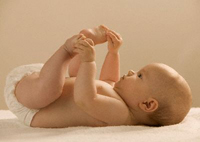 Thoman13 distinguishes newborns as having either "well-organized" states or "poorly-organized" ones. She described babies as "well-organized" if they were "easy to read" by caregivers or if they gave clear cues to caregivers as to whether they were awake, asleep, or uncomfortable. These infants spent more time in "states of greater equilibrium", e.g. Quiet Sleep or Quiet Alert. "Poorly-organized" infants spent significantly less time in Quiet Sleep or Quiet Alert states. They spent more time in Transitional, Crying, Drowsy and Nonalert Waking states, all of which create difficulties for caregivers who are trying to respond appropriately to infants' cues.
Thoman13 distinguishes newborns as having either "well-organized" states or "poorly-organized" ones. She described babies as "well-organized" if they were "easy to read" by caregivers or if they gave clear cues to caregivers as to whether they were awake, asleep, or uncomfortable. These infants spent more time in "states of greater equilibrium", e.g. Quiet Sleep or Quiet Alert. "Poorly-organized" infants spent significantly less time in Quiet Sleep or Quiet Alert states. They spent more time in Transitional, Crying, Drowsy and Nonalert Waking states, all of which create difficulties for caregivers who are trying to respond appropriately to infants' cues.
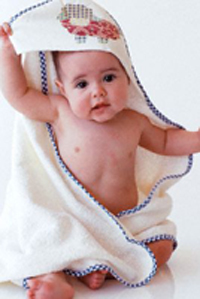 Another high arousal state described by Thoman13 is Crying. Although crying is a necessary and very adaptive behavioural state, it can be detrimental if prolonged or frequent. While in the Crying state, newborns exhibit a very high level of arousal.13 This can magnify the energy expenditure of an infant by as much as 200%.14 and may stimulate an infant's delicate basal metabolic rate.In a newborn, the Crying state demonstrates the closest obvious behaviours common to a general stress response.8 Prolonged crying can complicate the newborn's adaptation since it obstructs venous return in the inferior vena cava and reestablishes fetal circulation within the heart.2 Thus. poorly oxygenated blood flows back through the foramen ovale and into the systemic circulation and some degree of hypoxia is inevitable.
Another high arousal state described by Thoman13 is Crying. Although crying is a necessary and very adaptive behavioural state, it can be detrimental if prolonged or frequent. While in the Crying state, newborns exhibit a very high level of arousal.13 This can magnify the energy expenditure of an infant by as much as 200%.14 and may stimulate an infant's delicate basal metabolic rate.In a newborn, the Crying state demonstrates the closest obvious behaviours common to a general stress response.8 Prolonged crying can complicate the newborn's adaptation since it obstructs venous return in the inferior vena cava and reestablishes fetal circulation within the heart.2 Thus. poorly oxygenated blood flows back through the foramen ovale and into the systemic circulation and some degree of hypoxia is inevitable.
While cared for in the newborn nursery, the neonate must synchronize his or her behavioural states and physiological adjustments with an environment where there is no clear, pronounced diurnal rhythm in noise and light intensity or in caregiving activities. This is significant since for the neonate, one of the primary biorhythmic elements is the distribution and flow of sleep-awake states over a 24 hour period.7 In the nursery environment, continuous light and noise affect neonatal biorhythms which impacts on sleep regulation and state lability.
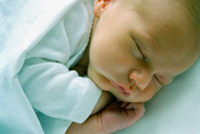 Lability or changes in state can be observed over time to reveal patterns of infant organization and state regulation.7 This variability of state is an early indicator of an infant's capacity for self- organization. It is also an indicator of an infant's ability and effort to adapt to perceived disturbing internal or external stimuli.8 Erratic or frequent state changes may imply that an infant is having difficulty achieving a rhythmic flow to the states.
Lability or changes in state can be observed over time to reveal patterns of infant organization and state regulation.7 This variability of state is an early indicator of an infant's capacity for self- organization. It is also an indicator of an infant's ability and effort to adapt to perceived disturbing internal or external stimuli.8 Erratic or frequent state changes may imply that an infant is having difficulty achieving a rhythmic flow to the states.
A state of relaxation may facilitiate the newborn's ability to regulate his/her behavioural state organization despite the noxious environmental stimuli in the hospital nursery. Music has distinct effects on the human organism. Soothing music can be used to achieve an alpha wave brain state which initiates a state of relaxed awareness.
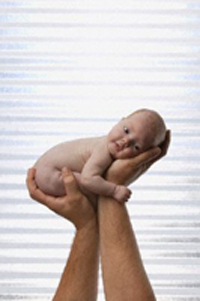 Soothing music with a flowing, lyrical melody, simple harmony, soft tone colour, and easy rhythm (About 60 to 80 beats per minute) can help to stimulate the relaxation response.15, 16 Music can stimulate the release of endorphins from the brain, reduce blood levels of ACTH and increase phenylethylamine secretion. Neural impulses triggered by soothing music can trigger autonomic nervous system reactions to produce relaxation in muscle tone, brain wave frequency, galvanic skin response, pilomotor reflexes and pupillary reflexes.17 Music also facilitates emotional homeostasis.18
Soothing music with a flowing, lyrical melody, simple harmony, soft tone colour, and easy rhythm (About 60 to 80 beats per minute) can help to stimulate the relaxation response.15, 16 Music can stimulate the release of endorphins from the brain, reduce blood levels of ACTH and increase phenylethylamine secretion. Neural impulses triggered by soothing music can trigger autonomic nervous system reactions to produce relaxation in muscle tone, brain wave frequency, galvanic skin response, pilomotor reflexes and pupillary reflexes.17 Music also facilitates emotional homeostasis.18
The sedative effects of music have been aptly described in the literature. Olds19 studied the fetal response to music and found that dreamy, lyrical music seemed to calm the fetus, while loud, complex music stimulated hyperactive fetal movement. Chetta,20 Fagen,21 Marley,22 and Owens14 credited soothing music for decreasing fear, distress and anxiety in hospitalized infants, toddlers, and their families. Fagen21 described music as an intervention ideally suited to "...promote creative wellness attributes in the very ill child" (p.61). Verdeau-Pailles17 postulated that lullabies used in a newborn Intensive Care Unit setting resulted in 16% less time needed for premature infants to reach the weight criterion for discharge. Thus, music has demonstrated the potential to be used as an effective intervention in a variety of patient populations. And the literature suggests that music can assist infants to maintain behavioural state integrity.
Purpose
The purpose of this study was to relate the effect of selected soothing music to the number of high arousal states and number of state changes observed in newborns cared for in the hospital nursery.
Hypotheses
1. The control group will demonstrate a significantly higher number of high arousal states than the experimental group.
2. The control group will demonstrate a significantly greater state lability or number of state changes than the experimental group.
Method
 A quasi-experimental, one group, pretest, posttest design was used in this study. The study was conducted in two twenty - bed nurseries of a tertiary care facility located in a Western province of Canada. Upon receiving the subject's parent(s) written consent, the investigator arranged a preferred time for observations (all mothers preferred late night hours, after bedtime and between infant feedings).
A quasi-experimental, one group, pretest, posttest design was used in this study. The study was conducted in two twenty - bed nurseries of a tertiary care facility located in a Western province of Canada. Upon receiving the subject's parent(s) written consent, the investigator arranged a preferred time for observations (all mothers preferred late night hours, after bedtime and between infant feedings).
A convenience sample (n=20) were selected from the newborn population in two nurseries in a tertiary care facility. Criteria for inclusion were the infants would be greater than 36 weeks gestational age; be between 24 -72 hours old; weigh greater than 2800 grams at birth; have Apgar scores of greater than 8 at five minutes of age; equal number of males and females; vaginal delivery; have no prenatal, intrapartal, or postpartum complications; and be Caucasian. Caucasian infants were selected because it is suggested in the literature that newborns of different ethnic backgrounds may respond differently to the tonal quality, melody, rhythm and instrumentation of music, especially if their mother listened to traditional ethnic music during pregnancy.15
Definitions
High arousal behavioural states: Two of the seven behavioural states outlined by Thoman,12 Nonalert Waking and Crying states. Both represent behaviours indicating a high activity level, grimaces, distressed facial expressions, fussing and vocalizations, all indicative of a stress response in newborns.8
Music: Soothing, dreamy arrangements with a flowing, lyrical melody; a quiet, calm tone colour; simple and consonant harmony; and an easy, slow rhythm at approximately the same rate as a regular heartbeat (65 - 80 beats per minute). An example is J. Brahm's "Lullaby".
State Lability: Represents the amount of changes a neonate exhibits from one behavioural state to another.
Procedure
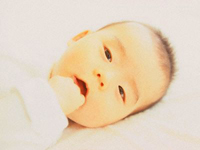 Twenty newborn subjects who met the sample selection criteria were individually observed for a total of four hours. During the first two hour observation (control) each subject was observed without exposure to the selected music. During the second observation (experimental) the selected music was played via a three inch circular "Pillow" speaker placed in the cot, connected to a dual cassette tape playing system, (Model: Samsung PD-790C) set at 35 decibels of sound. The tape system was set on continuous play mode. Each subject was breast or bottle fed within a half hour before both the control and experimental observations began. Each subject also had his/her diaper changed by the mother or nursery nurse prior to both the control and experimental observations. The subjects were all positioned in a lateral position and bundled uniformly.
Twenty newborn subjects who met the sample selection criteria were individually observed for a total of four hours. During the first two hour observation (control) each subject was observed without exposure to the selected music. During the second observation (experimental) the selected music was played via a three inch circular "Pillow" speaker placed in the cot, connected to a dual cassette tape playing system, (Model: Samsung PD-790C) set at 35 decibels of sound. The tape system was set on continuous play mode. Each subject was breast or bottle fed within a half hour before both the control and experimental observations began. Each subject also had his/her diaper changed by the mother or nursery nurse prior to both the control and experimental observations. The subjects were all positioned in a lateral position and bundled uniformly.
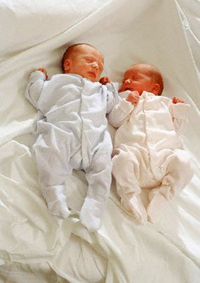 All subjects were dressed in a diaper, a hospital infant gown (extended to baby's hips) and wrapped loosely in a flannel blanket with hands and forearms free. The newborns were bundled by the nursery nurse with the blanket wrapped more loosely than usual to allow easier viewing of foot and knee movement for the investigator. The cot was situated amongst the other infants in the nursery. The observer sat within a five foot radius of the cot in direct line of vision to the infant. All subjects were continuously observed for frequency of the dependent variable, high arousal behavioural states and for behavioural state changes or lability in 10 second epochs.
All subjects were dressed in a diaper, a hospital infant gown (extended to baby's hips) and wrapped loosely in a flannel blanket with hands and forearms free. The newborns were bundled by the nursery nurse with the blanket wrapped more loosely than usual to allow easier viewing of foot and knee movement for the investigator. The cot was situated amongst the other infants in the nursery. The observer sat within a five foot radius of the cot in direct line of vision to the infant. All subjects were continuously observed for frequency of the dependent variable, high arousal behavioural states and for behavioural state changes or lability in 10 second epochs.
The control observation was done first for two hours unless the subject became distressed and required caregiving. Once the infant was calm, he/she was repositioned in the cot by the nursery nurse and the observation continued for a total of two hours. The investigator began the experimental observation after the subject had been fed, the diaper had been changed and the newborn was repositioned in the cot as described above. The average amount of time from the beginning of the control observation and the ending of the experimental observation was approximately six hours. The longest timespan for one subject was ten and a half hours from start to finish.
Instrument
The observer recorded the observed state behaviours and lability using a collection tool designed by E. Thoman.12 Thoman and her collegues have used this collection tool in a variety of studies with infants. Thoman, Korner & Kraemer22 reported a reliability coefficient of r = .75. In their 1989 Thoman & Whitney23 calculated test-retest correlation coefficients which ranged from r = .70 to .87 for all seven of the tabulated behavioural states. Thoman has replicated her studies using this particular instrument several times between 1975 and 1990.12 Thoman asserts that her taxonomy of behavioural states has been assessed psychometrically more than any other state classification schema.12 Thoman has applied concepts from behavioural theory to qualitatively describe behavioural states, assign molecular behaviour identifiers and design the measurement tool.9
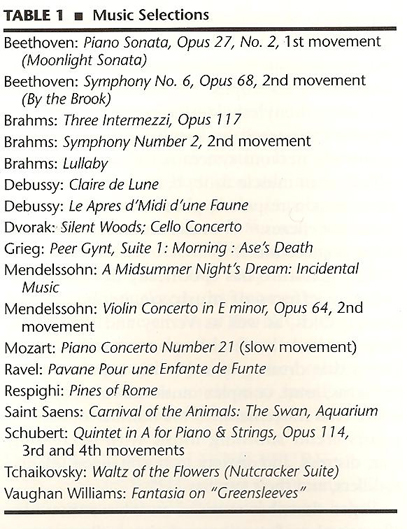
| Table 1b. Demographic Characteristics of the Newborn Sample (n = 20) | |||
|
Total Time: (4 hours) 2 hour Control Observation 2 hour Experimental Observation | |||
| Variable | Mean | SD | Range |
|---|---|---|---|
| Gestational Age (weeks) | 39.3 | 1.5 | 36-42 |
| Apgar (5 minutes) | 9.1 | 0.3 | 9-10 |
| Hours Postbirth | 37.8 | 12.5 | 24-57 |
| Birth weight (grams) | 3527.0 | 383.6 | 2860-4160 |
| Maternal Age | 27.7 | 5.9 | 20-38 |
| Siblings | 0.4 | 0.7 | 0-2 |
All but 2 were breastfed. All born vaginally, without complications.
|
Table 2.
Number of High and Low Arousal Behavioural States and Number of State Changes (Lability) during the Control and the Experimental Observations (in 10 second epochs). | ||
|
Observation (2 hours each) | High Arousal States | Lability: Number of State Changes |
|---|---|---|
|
CONTROL Number of occurrences | 2404 | 596 |
|
EXPERIMENTAL Number of occurrences | 872 | 463 |
| z score | 2.32 | 2.93 |
| 1.65 needed for sig. @ .05 level | p < .01 | p < .001 |
Data Analysis
In this study, the behavioural states were categorized into high arousal states (Nonalert Waking and Crying) or low arousal states (Quiet Sleep, Active Sleep, Drowse/Daze, Transitional, and Quiet Alert). The tallied frequency score for each subject was compared for differences in demonstration of the high arousal behavioural states between the control and the experimental observations (see Table 2).
The number of high arousal states observed during the control and experimental periods was compared using the one - tailed, McNemar's test (alpha < .05) as directed by Ferguson.24 A normal deviate z score was obtained by dividing the difference between the two proportions of high arousal states and low arousal states for both the control and experimental observations. A z score was also calculated for the proportions of state changes or lability between the two observations. A one-tailed z score was obtained since it was predicted that the control group would have a higher number of high arousal states than the experimental group.
Limitations
Some limitations evident in the study included:
1) The study did not control for variance in caregiver effects. The quality of care given by the assigned nursery nurse may have a significant difference in the rhythmical change of each neonate's behavioural states.
2) The data gathered were limited by the observational perception of the observer and the presence of infant's clothing.
3) There was no interrater reliability established because only one investigator conducted the study.
4) Data gathered during pilot testing were included in the data analysis and may have affected the findings.
5) The investigator was aware of the timing of the control and the experimental conditions and that may have biased the investigator's observations.
Study Results
The twenty neonates exhibited 2404 occurrences of high arousal states (Nonalert waking and Crying) during the two hour control period when observed in ten second epochs. The same neonates demonstrated 872 occurrences of high arousal states during the two hour experimental observation. A onetailed z score of 2.32 was obtained indicating a significant difference in the number of high arousal states observed during the two observations.
State lability or frequency of state changes was measured to test the second hypothesis. A measure of state lability27, 12 was derived by counting the number of state changes that occurred during the two observation periods. The newborns changed state (lability) 596 times during the control period and 463 times during the experimental period. A z score of 2.93 was calculated also indicating a significant difference in the number of state changes between the two observations.
During the control period, the infants studied demonstrated a higher frequency of state changes, often to a state of high arousal (Nonalert or Crying). These same infants demonstrated fewer state changes coupled with less time spent in high arousal states when exposed to soothing music. These findings suggest that music may have served in some capacity to help the newborns regulate their behavioural state changes, so that they were not moving so frequently to high arousal states.
Discussion
 Newborns in this study, exposed to soothing music, spent significantly less time in the high arousal states. Perhaps the music played a role in facilitating adaptation in the listening subjects to the nursery environmental stimuli. The music may have also stimulated the limbic system and temporal lobes of the cerebral cortex to assist the newborns to generally maintain lower arousal states in the presence of any environmental stimuli.25
Newborns in this study, exposed to soothing music, spent significantly less time in the high arousal states. Perhaps the music played a role in facilitating adaptation in the listening subjects to the nursery environmental stimuli. The music may have also stimulated the limbic system and temporal lobes of the cerebral cortex to assist the newborns to generally maintain lower arousal states in the presence of any environmental stimuli.25
The relaxation response represents the opposite of the stress response demonstrated by newborns when in the high arousal states (Nonalert Waking and Crying). The relaxation response is triggered by the parasympathetic nervous system contrasted with the sympathetic predominance in the stress response.26 It is possible that the exposure to the selected soothing music in this study somehow helped facilitate the relaxation response in the subjects, decreasing the amount of time spent in high arousal states during the experimental observation.
Soothing music may be of benefit to newborns attempting to regulate their behavioural state through the innate qualities of gentle rhythm, tone colour, melody and harmony. The use of soothing music seems to be a potential way to help facilitate an organized rhythm of behavioural state manifestation with less movement between states. It appears that soothing music could benefit newborns attempting to adapt to extrauterine life while cared for in the hospital newborn nursery. This adaptation would include a demonstration of few high arousal states and fewer behavioural state changes (lability).6, 27, 12
The results of this study have implications for nursing practice. Nurses are responsible for providing care for neonates within the normal newborn nursery. The findings suggest that exposing newborns to soothing music would be a cost-effective, feasible intervention for nurses to provide to facilitate fewer high arousal states. However, in order to utilize music as an intervention nurses would need to recognize the potential of noxious stimuli (such as loud noises, bright lights) to disrupt normal state patterns within the nursery setting. Nurses should become aware of the usefulness of music as a health intervention to provide more holistic care for their clients. Nurses should also become proficient in assessing behavioural states in newborns and providing appropriate stimulation to correlate with the apparent state of consciousness. Teaching parents the necessity of stimulation and how to use music as a way to stimulate or soothe can facilitate newborn wellbeing.
Although the sample size was small (n = 20) it was large enough to provide worthwhile data for a preliminary research study. This study was exploratory in nature and covered a wide range of subject behaviours. Findings from this study suggest avenues for further nursing research. Replications of this particular study could validate the representability of the findings. Other studies, using various cultural types of music could also be done to examine the variable of ethnic predisposition in relation to musical familiarity and preference. The usefulness of music for newborns in alternate environments could also be tested, for example, in the mother's hospital room when "rooming - in" or at home.
More research needs to be done on the patterns of behavioural states exhibited within the nursery environment.8,28,29 Further research in special care nurseries could also be valuable to examine the relationship of high arousal states and music in premature and high risk newborns.30,22,14,31
In summary, the findings of this study suggest that high arousal states and state lability in newborns may be influenced by exposure to soothing music. Further testing could support the hypotheses that soothing music helps reduce the frequency of high arousal states and frequency of state change when newborns are in the nursery. The methods and findings of this study offer some direction for further testing of the potential usefulness of music for neonates experiencing extrauterine adjustment within the hospital setting.
References
1. Pratt, R.(Ed.) 1985. The fourth international symposium on music: Rehabilitation and human well-being. New York: University Press.
2. Anderson, G. 1989. Risk in Mother-Infant separation postbirth. Image, 21(4): 196-199.
3. Karraker, K. 1986. Adult attention to infants in a newborn nursery. Nursing Research, 35(6): 358-363.
4. Jensen, M., Boback, I., & Zalar, M. 1989. Maternity and gynecologic care: The nurse and the family. (4th ed.). St. Louis: C.V. Mosby.
5. Hilton, A. B. 1985. Noise in acute patient care areas. Research in Nursing and Health, 8: 283-291.
6. Kosten, C. & Van Os, G. 1962. Community reaction criteria for external noises. Paper F-5, N.P.L. Symposium, No. 12, The control of noise, London: HMSO.
7. Keefe, M. 1987. Comparison of neonatal nighttime sleep - wake patterns in nursery vs rooming-in environments. Nursing Research, 36(2): 114-119.
8. Brazelton, T. 1984. Neonatal behavioural assessment scale 2nd ed. Philadelphia: J.B. Lippincott.
9. Thoman, E., Denenberg, V., & Sievel, J. 1981. State organization in neonates: developmental inconsistency indicates risk for developmental dysfunction. Neuropediatrics, 12: 59-75.
10. Stratton, P. 1982. Psychobiology of the human newborn. New York: John Wiley & Sons.
11. Lewis, M., & Zarin - Ackerman, J. 1970. Early infant development. In Behrman, R., Driscoll, J. & Seeds, A. (eds.) Neonatal perinatal medicine: Diseases of the fetus and infant. 2nd ed. St. Louis: C.V. Mosby.
12. Thoman, E. 1990. Sleeping and waking states in infants : A functional perspective. Neouroscience and Biobehavioural Reviews, 14: 93-107.
13. Thoman, E. 1975. Sleep and wake behaviours in neonates: consistencies and consequences. Merill - Palmer Quarterly, 21(4): 295 -314.
14. Owens, L. 1979. The effects of music on the weight loss, crying, and physical movement of newborns. Journal of Music Therapy, 16(2): 83-90.
15. Benenzon, R. 1981. Music therapy manual. Springfield,IL: Charles C. Thomas.
16. Schoen, M. (Ed.) 1968. The effects of music. Freeport, NY: Books for Libraries.
17. Verdeau - Pailles, J. 1985. Music and the body. In R. Pratt (Ed.). The fourth international symposium on music: Rehabilitation and well - being, Lanham, MD: University Press of America: 37 - 87.
18. Livingston, J. 1979. Music for the childbearing family. Journal of Obstetrics, Gynecologic, and Neonatal Nursing, 8 : 363-367.
19. Olds, C. July, 1985. Fetal response to music. Midwives Chronicles and Nursing Notes: 202-203.
20. Chetta, H. 1981. The effects of music and desensitization on preoperative anxiety in children. Journal of Music Therapy, 18: 88-100.
21. Fagen, T. 1982. Music Rx in the treatment of anxiety and fear in terminal pediatric patients. Music Therapy, 2(1): 13-23.
22. Thoman, E., Korner, A., & Kraemer, H. 1975. Individual consistency in behavioural states in neonates. Developmental Psychobiology, 9(3): 271-283.
> 23. Marley, L. 1984. The use of music with hospitalized infants and toddlers: a descriptive study. Journal of Music Therapy, 21: 126-132.
24. Thoman, E., & Whitney, M. 1989. Sleep states of infants monitored in the home: Individual differences, developmental trends, and origins of diurnal activity. Infant Behaviour and Development, 12: 59 -75.
25. Ferguson, G. 1981. 5th ed. Statistical Analysis in Psychology and Education. New York: McGraw-Hill.
26. Harvey, A. 1985. Understanding your brain's response to music. International Brain Dominance Review, 2(1): 32 - 39.
27. Shaw-Shuster, C. & Smith-Ashburn, S. 1986. The process of human development: A holistic life span approach, 2nd ed. Boston, Mass.:Little & Brown.
28. Colombo, J., Moss, M. & Horowitz, F. 1989. Neonatal state profiles: Reliability and short-term prediction of neurobehavioural status. Child Development, 60: 1102- 1110.
29. Lawson, K., Turkewitz, G., Platt. M. & McCarton, C. 1985. Infant state in relation to its environmental context. Infant Behaviour and Development, 8: 269-281.
30. Lerner, R. 1984. On the nature of human plasticity. Cambridge, UK: Cambridge University.
31. Duxbury, M., Henley, S., Broz, L., Armstrong, G., & Wachdork, C. 1984. Caregiver disruptions and sleep of high-risk infants. Heart and Lung, 13 (2):141-147.
32. Scanlon, J., Nelson, T., Grvlackl, I. & Smith , Y. 1979. A system of newborn physical examination. Baltimore: University Park Press.
© June Kaminski Published: 1996.















